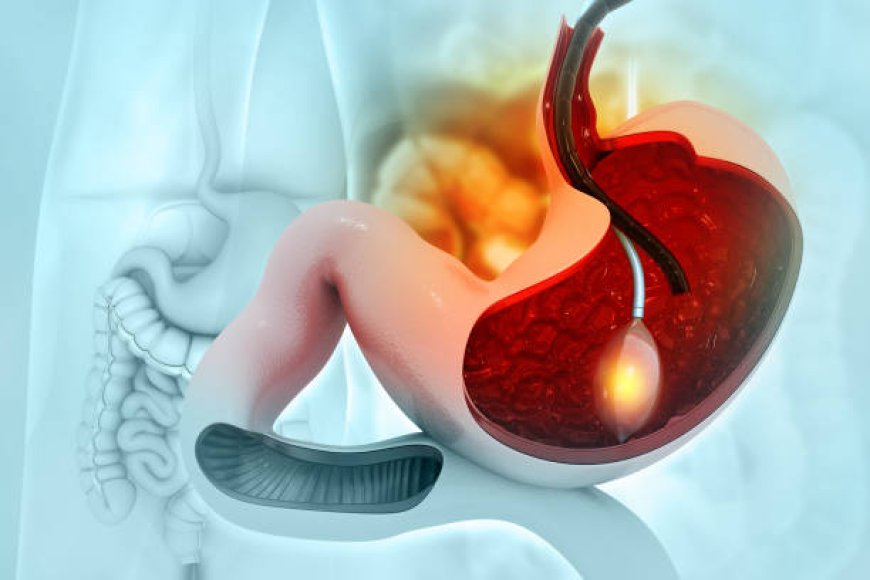Risks of Gastric Balloon Placement
A silicone balloon is inserted into the stomach during gastric balloon surgery to help with weight loss. This is a minimally invasive surgery intended for people who have trouble controlling their weight and suffer with obesity.

Gastric balloon surgery(وضع بالون المعدة في الرياض) has gained popularity as a non-surgical weight loss option, particularly among individuals looking for effective solutions to obesity. While this procedure can lead to significant weight loss and improved health outcomes, it is essential to understand the potential risks associated with gastric balloon placement. In this blog, we will explore these risks in detail, providing you with the information necessary to make informed decisions about your weight loss journey.
Understanding Gastric Balloon Surgery
Gastric balloon surgery involves the placement of a silicone balloon in the stomach, which is then inflated with saline. This procedure aims to reduce the amount of food the stomach can hold, promoting a feeling of fullness and aiding in weight loss. Although it is less invasive than traditional bariatric surgery, it still carries some risks.

How Gastric Balloon Works
The balloon occupies space in the stomach, which reduces the volume available for food. Patients typically undergo this procedure for a period of six months to a year, during which they are encouraged to adopt healthier eating habits and lifestyle changes to maximize weight loss.
Common Risks of Gastric Balloon Placement
While many people benefit from Gastric Balloon Surgery in Riyadh, it is vital to be aware of the risks involved. Here are some common risks associated with the procedure:
1. Nausea and Vomiting
One of the most common side effects of gastric balloon placement is nausea, which can lead to vomiting. This is often experienced shortly after the procedure and may last for a few days as the body adjusts to the presence of the balloon. While this discomfort is usually temporary, it can be distressing for patients.
2. Abdominal Pain and Discomfort
Patients may experience abdominal pain or discomfort after the procedure. This can be attributed to the balloon's presence in the stomach, which can lead to a feeling of fullness or pressure. In some cases, the pain may be severe enough to require medical attention.
3. Gastroesophageal Reflux Disease (GERD)
Some patients may develop or experience worsening symptoms of gastroesophageal reflux disease (GERD) following Gastric Balloon Surgery in Riyadh. This condition involves the backflow of stomach acid into the esophagus, leading to heartburn, regurgitation, and discomfort. It is crucial to monitor any symptoms of GERD and discuss them with a healthcare professional.
4. Balloon Deflation
In rare cases, the gastric balloon may deflate prematurely, leading to complications. If the balloon deflates, it can pass through the digestive system and cause blockage or other issues. This risk highlights the importance of selecting a reputable provider for the procedure.
Serious Complications
While many risks associated with gastric balloon placement are manageable, some complications can be serious. Understanding these risks can help patients make informed choices about the procedure.
1. Intestinal Obstruction
An intestinal obstruction occurs when the balloon moves from the stomach to the intestines, causing a blockage. This can lead to severe pain, vomiting, and the inability to pass gas or stool. If an obstruction occurs, immediate medical attention is necessary.
2. Perforation of the Stomach or Intestines
Although rare, perforation of the stomach or intestines is a serious complication that can occur during or after gastric balloon placement. This condition involves a tear in the stomach wall, which can lead to peritonitis—a life-threatening infection of the abdominal cavity. Symptoms of perforation include severe abdominal pain, fever, and sudden changes in health.
3. Infection
Any surgical procedure carries the risk of infection. While gastric balloon placement is minimally invasive, infection can occur at the insertion site or within the stomach. Patients should be vigilant about monitoring for signs of infection, such as increased redness, swelling, or drainage at the site.
Long-Term Risks
Patients considering Gastric Balloon Surgery in Riyadh should also be aware of potential long-term risks associated with the procedure. While many individuals achieve successful weight loss, maintaining this weight loss can be challenging.
1. Weight Regain
While the gastric balloon can help facilitate weight loss, some individuals may experience weight regain after the balloon is removed. This can occur if patients do not adopt sustainable lifestyle changes during the treatment period. It is crucial to view the gastric balloon as a tool for change rather than a permanent solution.
2. Psychological Impact
The psychological effects of weight loss and body image can vary from person to person. Some individuals may struggle with their self-esteem or body image despite successful weight loss, leading to emotional challenges. Support from mental health professionals can be beneficial in navigating these feelings.
Preparing for Gastric Balloon Surgery
If you are considering Gastric Balloon Surgery in Riyadh, proper preparation can help minimize risks and improve outcomes. Here are some essential steps to take before the procedure:
1. Consultation with a Healthcare Professional
Before undergoing the procedure, it is vital to consult with a healthcare professional who specializes in weight loss procedures. They will assess your medical history, discuss your goals, and help determine if gastric balloon surgery is the right choice for you.
2. Pre-Procedure Testing
Your healthcare provider may recommend specific tests to evaluate your overall health and ensure you are a suitable candidate for gastric balloon placement. These tests can include blood work, imaging studies, and assessments of your weight and dietary habits.
3. Understanding the Procedure
Educate yourself about the gastric balloon procedure, including what to expect before, during, and after placement. Understanding the process can help alleviate anxiety and improve your experience.
Post-Procedure Care and Monitoring
After the gastric balloon is placed, proper post-procedure care is crucial for minimizing risks and promoting successful weight loss.
1. Follow-Up Appointments
Schedule regular follow-up appointments with your healthcare provider to monitor your progress and address any concerns. These appointments are essential for assessing your weight loss journey and making necessary adjustments to your plan.
2. Dietary Changes
Adopting a healthy diet is critical for maximizing the benefits of gastric balloon surgery. Your healthcare provider will likely provide dietary guidelines to follow post-procedure, emphasizing the importance of portion control and balanced nutrition.
3. Support Groups and Counseling
Consider joining support groups or seeking counseling to help you navigate the emotional and psychological aspects of your weight loss journey. Connecting with others who have undergone similar experiences can provide valuable encouragement and motivation.
Conclusion
Gastric Balloon Surgery in Riyadh(وضع بالون المعدة في الرياض) can be an effective tool for weight loss, but it is not without its risks. Understanding the potential complications and taking steps to prepare for the procedure can help you make informed decisions about your health. If you are considering this option, consult with a qualified healthcare professional to ensure you have a thorough understanding of what to expect and how to achieve the best possible outcomes.
By being informed about the risks and actively engaging in your weight loss journey, you can set yourself up for success and improve your overall health and well-being.

 maria3211
maria3211